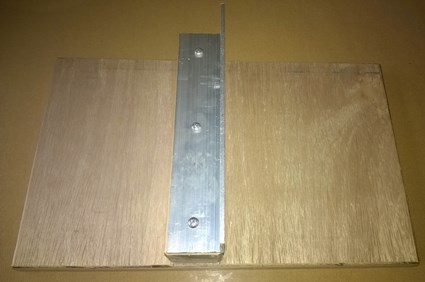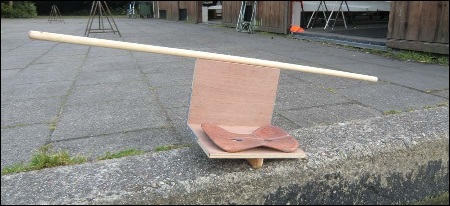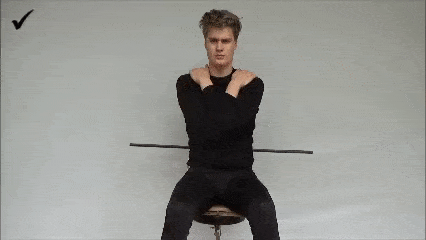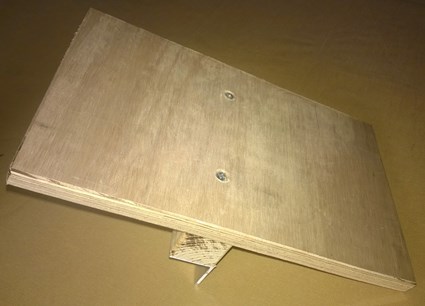|
|
Tool – Balancing board |
| Practice: | Sit on the balance board with the stick yourself and let the rower take place behind you. Ask him to gently rock the plank back and forth and let him feel the difference when you don't move with the plank yourself and keep in een upright position (feels light) and do move side to side with it (feels heavy). Then let the rower sit on the plank and ask him not to move at first and then to move side to side with the plank. Let him feel the difference between the two situations. Help him learn it by first allowing him to put his elbows on the stick and lean his back against the plank, then only lean his back against the plank, and finally sit loosely on the plank. |
| Type: |  Klassic tool developed by Klassic tool developed by  Jeroen Brinkman. The person moving the balance board feels very clearly whether the rower moves with the board or stays upright. Jeroen Brinkman. The person moving the balance board feels very clearly whether the rower moves with the board or stays upright. |
| Purpose: | Learning to use the inertia of the hull to counteract the roll of the boat. This by stabilising the hull laterally and moving along with the boat, like a motorcyclist on his motorbike or a mast on a ship. Also see:  Balance. Balance. |
| Focus: | When you move the stick, pay attention to the force required to move the stick. When you sit on the board, pay attention to fixing the trunk but to fix it passively (core stability). When moving side to side, you can see that the horizon tilts from left to right. |
| Variation: | Can also be trained using a single scull. The single scull rests against the pontoon and is released so far that the oarlock is clear of the pontoon. Then the above steps are performed, moving the boat by the end of the rigger. Keep the hands of the rower touching each other continuously: it is better to have a little movement correctly than a lot of movement that is performed incorrectly. |

Bottom side of the simple board.
| To make: | There are two variants, one with and one without a stick. If desired, a seat can be mounted on the balance board, but this is not necessary. The base of the plank without stick is made of plywood with the dimensions 1,8x35x20cm. An aluminium L-profile of 4x4cm can be used for the tilting strip. Be sure the sharp end of this strip is in the middle of the board. Optionally, the center of gravity can be raised with a beam of 4.5x4.5 cm. In the latter case, the balance board has the balance characteristics of a single scull. The board with stick is suitable for instructional purposes. Both the horizontal and vertical surface are made of plywood with the dimensions: 1,8x33x28cm. Both surfaces are attached to each other with an angle iron. A piece of round wood (broomstick) is screwed onto the vertical plane. The tilt strip is 1cm high, no more. An L-profile of 1cm or a 1x1x33cm wooden beam, rounded on two sides, can be used for this. |

The board with the stick attached to it

The balancing board in practice
 |
Training tool – Rowing bin |
 |
Tool – Handle simulator |
This article was translated automatically and is provided to you for free. You are most welcome to improve it!












